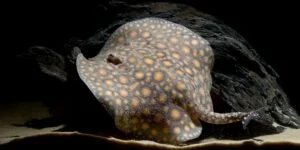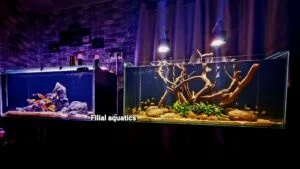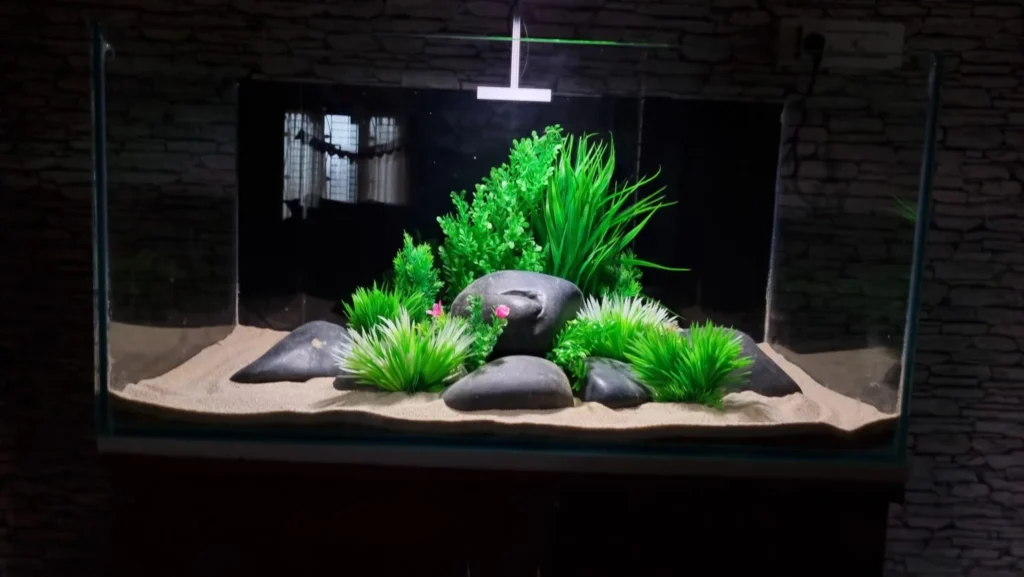Follow the Filial Aquatics channel on WhatsApp: https://whatsapp.com/channel/0029VagaoasLI8Ye55N5Ex1P
The Journey A Tale of Two Waters
The hills around Agasthiar Falls are nothing short of magical, with their cascading waters and lush greenery. As we trekked through these verdant landscapes, we were greeted by the serene sound of the waterfall, a fitting prelude to the adventure that awaited us in the Tamiraparani River.
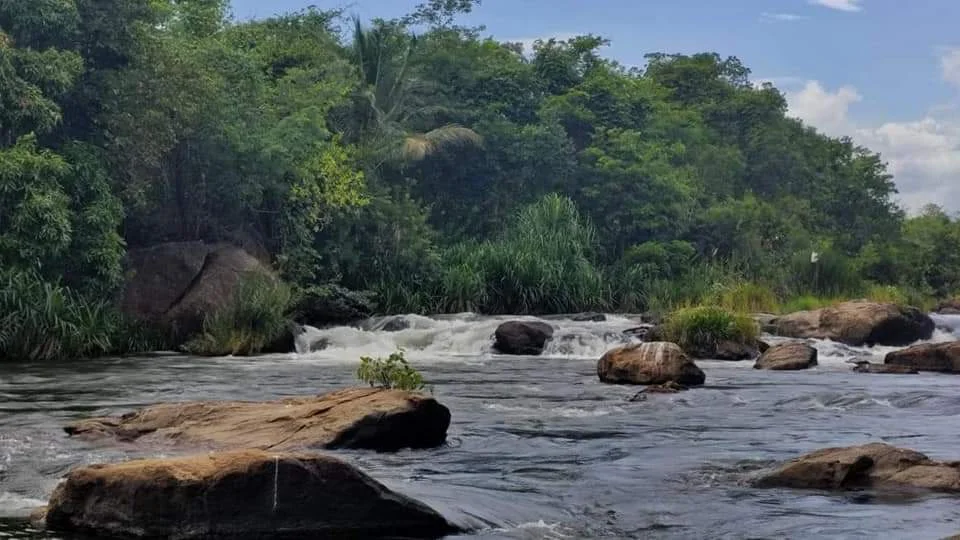
Our recent adventure took us deep into the pristine wilderness of the Agasthiar Falls and the Tamiraparani River, nestled in the heart of the Western Ghats. This journey wasn’t just a simple nature trip; it was a quest to discover the hidden treasures of these untamed waters—exotic loaches, vibrant barbs, and an authentic biotope that reflects the essence of this unique ecosystem.
The Tamiraparani River, with its crystal-clear waters and rich biodiversity, is a hidden gem of the Western Ghats. Flowing through Tamil Nadu, this river is not just a lifeline for the local communities but also a sanctuary for many endemic species of fish, including the exotic loaches and barbs that we were so eager to find.
The Catch Exotic Loaches and Barbs
Our search in the river’s cool, fast-flowing waters was rewarded with an array of vibrant fish species. The loaches we encountered were a sight to behold, with their intricate patterns and unique behaviors. The barbs, on the other hand, dazzled us with their bright colors and lively movements.

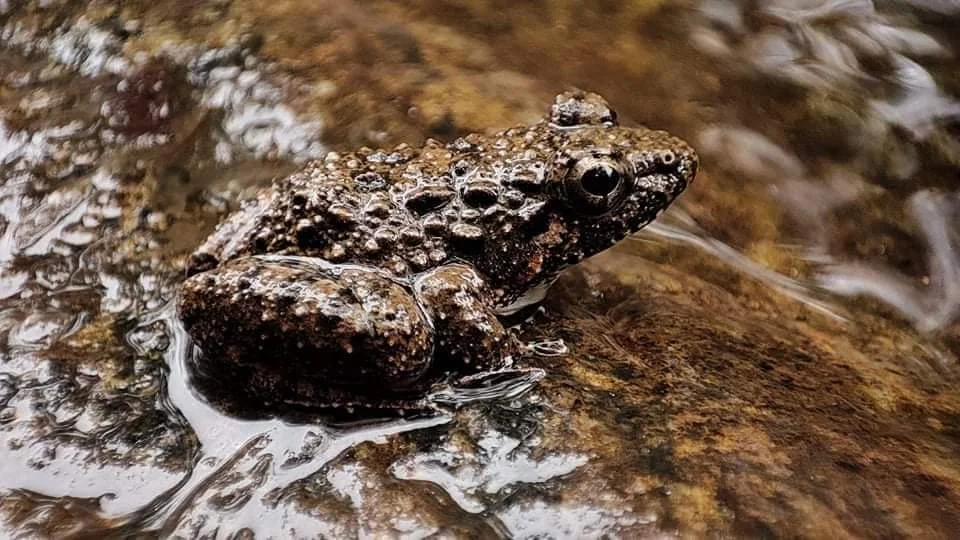
These species are a testament to the rich biodiversity of the Tamiraparani River, thriving in an environment that has remained relatively untouched by human interference. The loaches, with their preference for rocky substrates, and the barbs, with their affinity for shaded, plant-rich areas, reflect the diverse habitats found within this river.
Understanding the Biotope
The biotope of the Tamiraparani River is a fascinating mix of rocky outcrops, sandy beds, and densely vegetated areas. The water is typically soft and slightly acidic, with a gentle flow that supports a variety of aquatic plants and fish species.
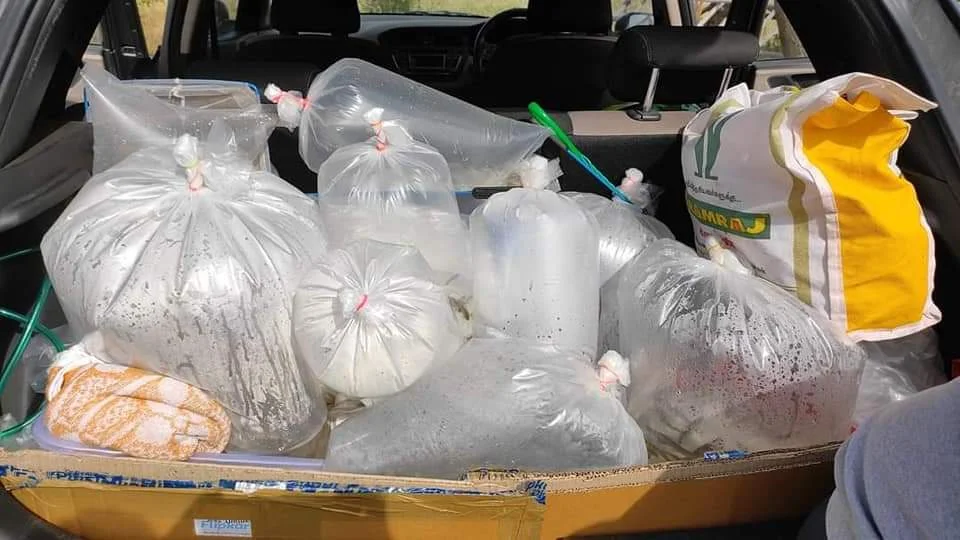
During our exploration, we noted the presence of several species of aquatic plants, including dense patches of Vallisneria and Cryptocoryne, which provide essential cover and breeding grounds for the fish. The river’s rocky substrates, coupled with the fallen leaves and driftwood scattered along the riverbed, create an ideal environment for bottom-dwelling species like loaches.
The Collection Trip Tips and Insights
For those eager to embark on a similar journey, here are a few tips that might come in handy:
- Timing is Key: The best time to explore these waters is early morning or late afternoon when the fish are most active.
- Respect the Habitat: Always ensure that you minimize disruption to the natural habitat. This means treading lightly, avoiding unnecessary noise, and being mindful of the plants and animals around you.
- Collect Responsibly: If you plan to bring back fish or plants, make sure to take only what you can sustain in a healthy environment at home. Over-collection can harm the delicate balance of the ecosystem.
- Prepare for the Terrain: The hills and riverbanks can be challenging, so proper footwear and gear are essential. Be ready for a mix of wet and rocky conditions.
Aquascaping Bringing the Wild Home
Watch the full video here:- Check-Out
Back in our workspace, we decided to recreate the natural beauty of the Tamiraparani River in an aquascape using all the materials we collected from the wild. The result was an aquascape that truly captures the essence of this unique biotope—a harmonious blend of rocks, driftwood, and aquatic plants that reflect the river’s natural environment.
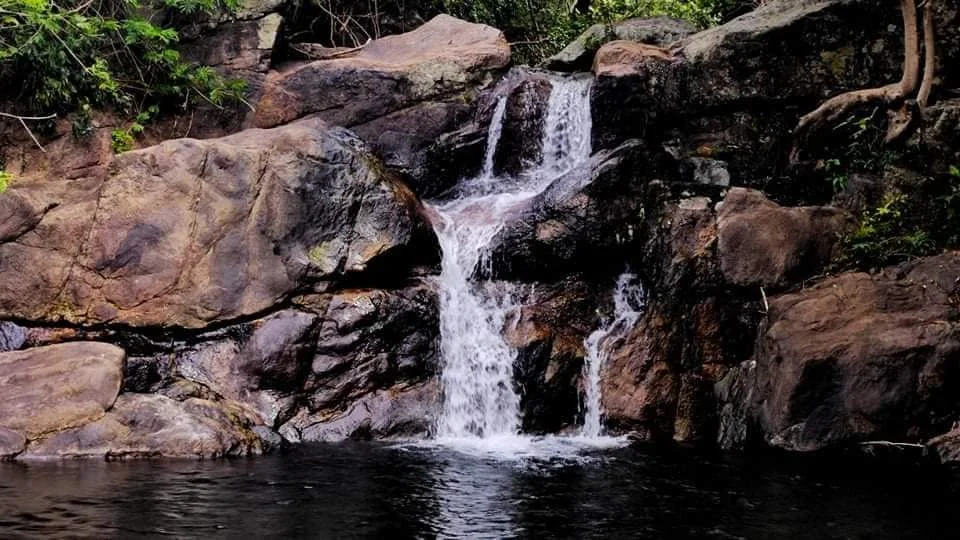
Tank Details:
For those eager to embark on a similar journey, here are a few tips that might come in handy:
- Tank Size: 48x24x24 inches
- Led light: Neo Helios XP 1200
- Canister filter: Fluval FX2
- Substrate: W used Neil sand as the base substrate.
- Hardscape: The rocks and driftwood used in the tank were all sourced from the river, and carefully arranged to mimic the natural flow and structure of the riverbed.
- Aquatic Plants: We planted Vallisneria and Cryptocoryne, the same species we found in abundance along the riverbanks.
- Livestock: The tank is now home to the exotic loaches and barbs we caught during our trip. They have adapted well to the environment, thriving in conditions that closely resemble their natural habitat.
The loaches and barbs now thrive in this carefully curated environment, a living testament to the beauty and diversity of the Tamiraparani River. Watching them explore their new home reminds them of the importance of preserving these wild places and the creatures that inhabit them.
Conclusion: A Journey Worth Taking
Our trip to the Agasthiar Falls and Tamiraparani River was more than just a collection trip; it was a journey into the heart of one of India’s most biodiverse regions. The memories of the exotic fish we caught and the aquascape we created will stay with us, constantly reminding us of the wonders that nature holds.
Our trip to the Agasthiar Falls and Tamiraparani River was more than just a collection trip; it was a journey into the heart of one of India’s most biodiverse regions. The memories of the exotic fish we caught and the aquascape we created will stay with us, constantly reminding us of the wonders that nature holds.
For those who love the wild and the aquatic world, we highly recommend exploring these waters. Whether you’re an experienced aquarist or a novice, the experience of discovering and bringing a piece of the wild into your home is truly unparalleled.
If you’re looking for the perfect aquascaping and ponds for your home or workplace write us at projectsfilialaquatics@gmailcom.
Check our product details at www.filialaquatics.in
Filial Aquatics Madurai’s Premier Aquascaping Gallery
Madurai’s Premier Aquascaping Gallery Welcome to Filial Aquatics, Madurai’s first and only dedicated gallery for the captivating art
Creating a Low-Maintenance Aquascape with Plastic Plants
The Perfect Plastic Plant Aquarium Oasis for a Client Transforming a 36x18x18-inch tank into a vibrant aquascape without
Aquascaping for Lake Malawi cichlids
Creating a Stunning Lake Malawi Cichlid Hardscape At Filial Aquatics, we recently completed an extraordinary project for a
Displaying Massive 10ft Aquarium for Exotic Lake Malawi Cichlids
Impressive Dimensions and Premium Materials This custom aquarium boasts impressive dimensions of 10x2x2.5 ft, crafted from 19mm toughened
Story of River A Journey Through Diverse Aquatic Ecosystems
Tank One Hill Stream Habitat The first tank features a hill stream habitat with tropical plants that thrive
A Stunning Discus Fish Aquascape Elegance Meets Functionality
Tank Details Seamless Design with Zero Silicon Pasting At Filial Aquatics, we take pride in designing vibrant, dynamic


